Hands On with the Motorola Droid Turbo 2 for Verizon
Oct 27, 2015, 12:31 PM by Eric M. Zeman

Motorola's new Droid Turbo 2 for Verizon aims to entice power users with two-day battery life, a powerful camera, and fast performance on Verizon's LTE 4G network. Motorola claims the Turbo 2 is more or less unbreakable thanks to what it calls "shatter shield" technology. Read on for Phone Scoop's first impressions of this Droid sequel.
Verizon Wireless and Motorola took to the stage in New York City today to show off the latest Droids, the Turbo 2 and the Maxx 2. Motorola has long been Verizon's Droid partner in crime, and these additions to the family carry forward the brand and partnership with pride.
Many aspects of the phones are similar. They have selectable rear colors, metallic frames, and more than a passing resemblance to the Moto X Pure Edition. Where the Turbo 2 aims to be a rugged, you-can't-break-it workhorse, the Maxx 2 targets more of the sub-flagship budget crowd.
This is the shining jewel in Motorola's current lineup. Motorola said it spent years developing the technology behind the Turbo 2's marquee feature, which should resolve the top complaint of smartphone owners around the country: broken screens.
Glass is brittle. Most often, when dropped, glass will break. Corning makes Gorilla Glass, a shatter-resistant material that protects the displays of many a smartphone. Gorilla Glass still breaks. Motorola's shatter shield is something else altogether.
The shatter shield display element is formed by five layers. The first is a rigid aluminum core to provide structural integrity. A flexible AMOLED display is placed on top of the aluminum core. The flexibility of the AMOLED helps absorb shock. The third layer is a dual touch layer to add redundancy in the case of failure. The fourth layer is an "interior lens" that provides a protect shield against breakage. The fifth and last layer provides a haricot to protect against scratches and other normal wear and tear. The sum of these parts is what Motorola claims is an unbreakable screen.
Does it work? Based on the demonstrations at today's press event, yes. We witnessed Motorola execs drop the same phone from about 5 feet onto cinder blocks no less than 20 times. It came away each time without a scratch. Now, Motorola did drop the phone face down, rather than on its edge or corners. We've yet to test its resistance to edge impacts.
With all those layers above the AMOLED display, the Turbo 2's screen isn't as bright as it could be. In fact, when held side-by-side with the Maxx 2 (LCD), the Turbo 2 was noticeably darker. The quad-HD resolution is incredibly sharp, however, and it looks quite good.
Moving on from the screen...
The Turbo 2 is a gigantic phone. The display measures 5.5 inches, and the added protective measures increase the size of the bezels and make for a very large handset. It is dense and heavy. The large battery (3740mAh) adds measurable weight. This is not a handset for people who are phablet averse. It often requires two hands and may not fit into all pockets, or at least not fit comfortably.
The design is what we expected from Motorola. It is quite obviously related to the 2014 Nexus 6 and the Moto X from 2015 an 2015. Motorola is allowing people to customize the Turbo 2 via its Moto Maker web site. Motorola says there are about 1,000 different ways to configure the phone, which includes various materials and colors for the rear panel. They all provide the same level of protection and performance. (The phone's innards have a nano-coating to prevent damage from accidental spills, but the Turbo 2 cannot live through a dip in the pool.) The leather and wood are always nice, and a new soft-grip material looks and acts a lot like hardened rubber. The materials all feel good in the hand, and the phone is assembled tightly.
One thing I like about the Moto X is how the fits into the frame. The glass is curved slightly at the edges to create a smoother seam between metal and glass. The Turbo 2 employs the opposite approach; the glass sits within the frame, which forms a small, raised lip. The phone's face is a busy place. Above the display, you'll note the flash, selfie cam, speaker grille, and several sensors. It's no less busy below the screen, where the speaker has been split into two to accommodate the Verizon logo (groan).
The screen lock button is located on the right side of the phone, within the metal frame. It has a nice, ribbed texture so that it stands apart from the volume toggle which is located below it. I like the travel and feedback of both these controls. The SIM tray and headphone jack are on top and the USB port is on the bottom.
The Turbo 2's camera module closely resembles that of the Moto X; it is a metal ellipse with the camera lens at one end and the indented Motorola logo at the other. The two-tone flash is in between. Interestingly, the flash is combined into a small circle, rather than an oval as on the Moto X.
Motorola loaded Android 5.1 Lollipop on the Turbo 2, which has a very slight skin from Verizon Wireless. There's the ever-familiar circular clock widget, and an abundance of Verizon bloatware clogging up the somewhat adjusted app drawer. One thing I'm not happy about: the camera. The Turbo 2 has the exact same camera app that's been on all Motorola phones since the 2013 Moto X. It's a rather crummy piece of software, in my opinion.
The Droid Turbo 2 goes on sale Oct 29. It costs $624 / $720 for the 32GB / 64GB versions, respectively. Verizon will sell it to you on an installment plan costing either $26 or $30 per month.
Comments
So does it have a MicroSD Card Slot?
http://www.motorola.com/us/products/droid-turbo-2#pe ... »


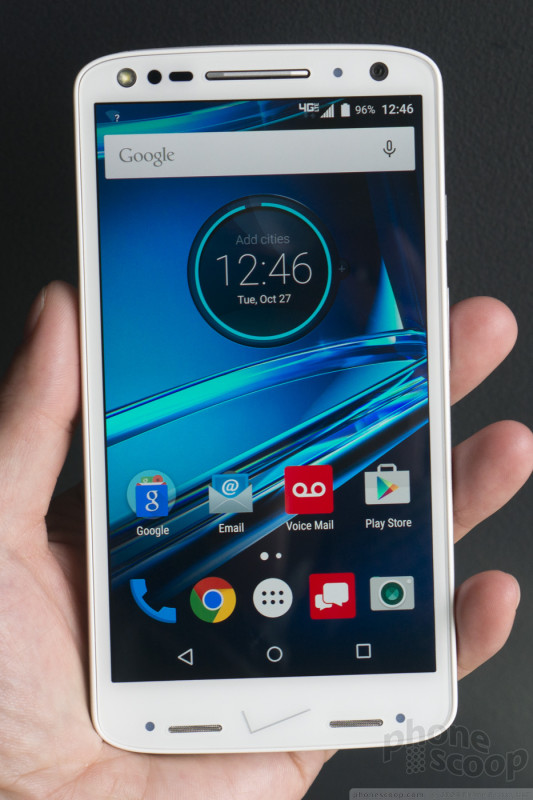
















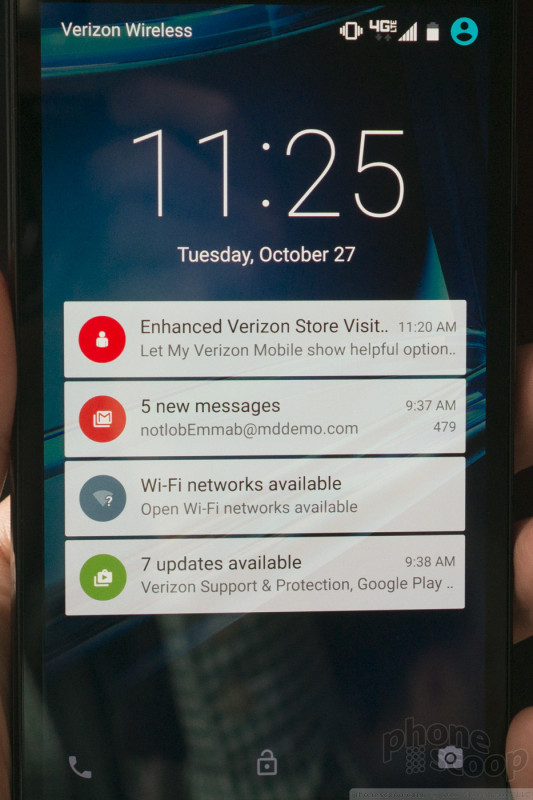










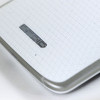 Review: Motorola Droid Turbo 2 for Verizon Wireless
Review: Motorola Droid Turbo 2 for Verizon Wireless
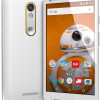 Verizon to Let Droid Turbo 2 Buyers Apply Star Wars Customizations
Verizon to Let Droid Turbo 2 Buyers Apply Star Wars Customizations
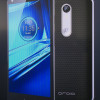 Motorola Droid Turbo 2 Has 'Shatter Shield'
Motorola Droid Turbo 2 Has 'Shatter Shield'
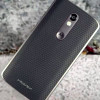 Verizon Teases Its Next Droid
Verizon Teases Its Next Droid
 Motorola Droid Turbo 2
Motorola Droid Turbo 2



